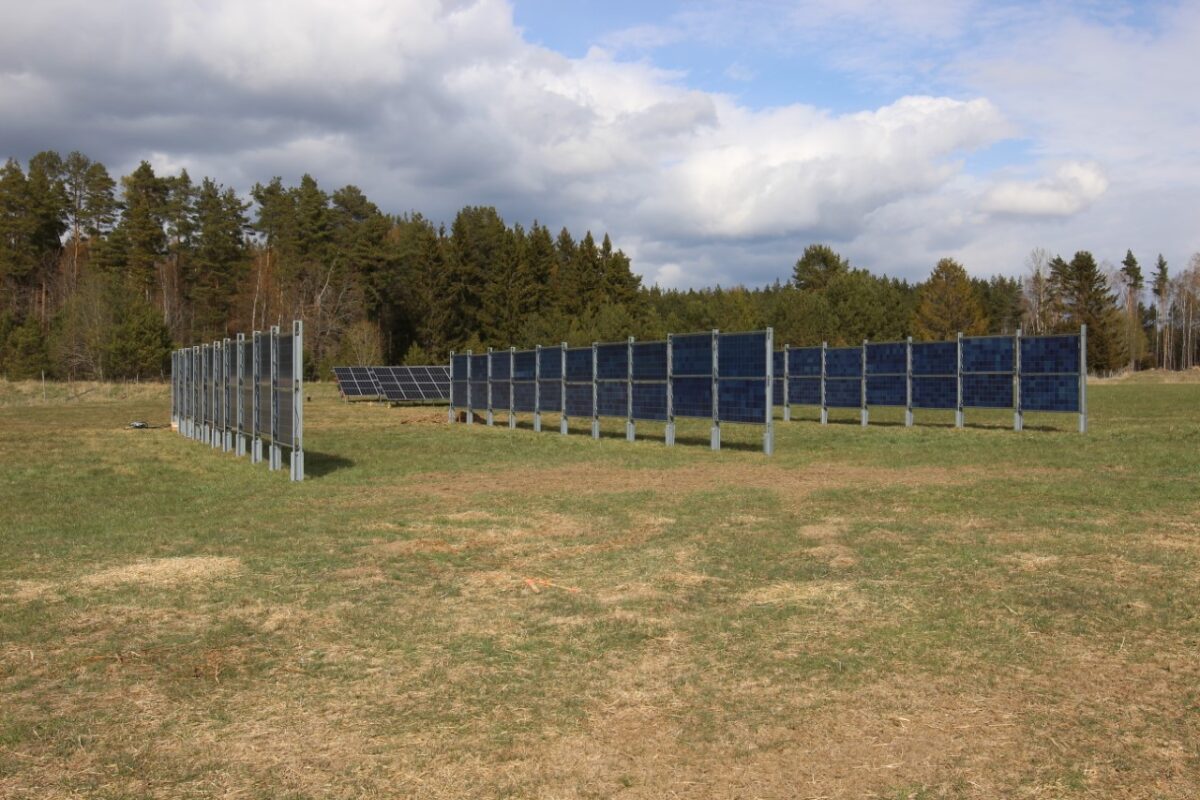An international group of researchers has developed a procedure for identifying and classifying suitable areas for the installation of agrivoltaic systems.
“It is one of the first published studies on combining Geographical Information Systems (GIS) approaches and multi-criteria decision making (MCDM) techniques to identify and classify the most suitable area for agrivoltaic systems,” co-author Pietro Campana told pv magazine.
The study found that approximately 8.6% – roughly 38,485 km2 – of the land in Sweden is suitable for agrivoltaic systems.
Using vertically mounted agrivoltaic systems with bifacial modules, the researchers determined the total potential installed capacity for areas classified as “excellent,” “very good,” and “good” is about 1.2 PWh, while the total for “excellent” and “very good” territory is about 207 TWh. Both totals represent a much higher production capacity than actual country-wide electricity consumption in 2021 and also surpass the highest-level forecasted electricity consumption for Sweden in 2050.
The group used a five-step GIS-MCDM approach where the GIS performed a location-based analysis with geographic data visualization and processing, and the MCDM algorithm was used to calculate the weights of various evaluation criteria. Geospatial maps that showed the suitability classifications for each of the criteria, as well as the final suitability map, were processed via ArcGIS Pro tools.
“As compared to the JRC report on the potentials of agrivoltaic systems in Europe that used statistical data, we have used the most recent Corine Land Cover (CLC2018) product from where we can estimate the areas that are physically used or could be used as agricultural areas and thus for the implementation of agrivoltaic systems,” Campana said.
The analysis found that areas categorized as pastures can provide about 80 TWh/year “while maintaining 90% of the potential national pastures grass yield.” The researchers assumed that the structures for the vertical solar installations would reduce the effective crop area by 10%. Despite the crop reduction at high latitudes, the team noted that agrivoltaic systems have the potential to be a financial boost for farmers.
Their findings are available in the report “Agrivoltaic systems potentials in Sweden: A geospatial-assisted multi-criteria analysis,” published in Applied Energy.
The authors included researchers from Saudi Arabia’s King Fahd University of Petroleum & Minerals, Egypt’s Kafrelsheikh University, Italy’s Università Cattolica del Sacro Cuore, and Sweden’s Mälardalen University, Uppsala University, and the Swedish Meteorological and Hydrological Institute.
This content is protected by copyright and may not be reused. If you want to cooperate with us and would like to reuse some of our content, please contact: editors@pv-magazine.com.




1 comment
By submitting this form you agree to pv magazine using your data for the purposes of publishing your comment.
Your personal data will only be disclosed or otherwise transmitted to third parties for the purposes of spam filtering or if this is necessary for technical maintenance of the website. Any other transfer to third parties will not take place unless this is justified on the basis of applicable data protection regulations or if pv magazine is legally obliged to do so.
You may revoke this consent at any time with effect for the future, in which case your personal data will be deleted immediately. Otherwise, your data will be deleted if pv magazine has processed your request or the purpose of data storage is fulfilled.
Further information on data privacy can be found in our Data Protection Policy.